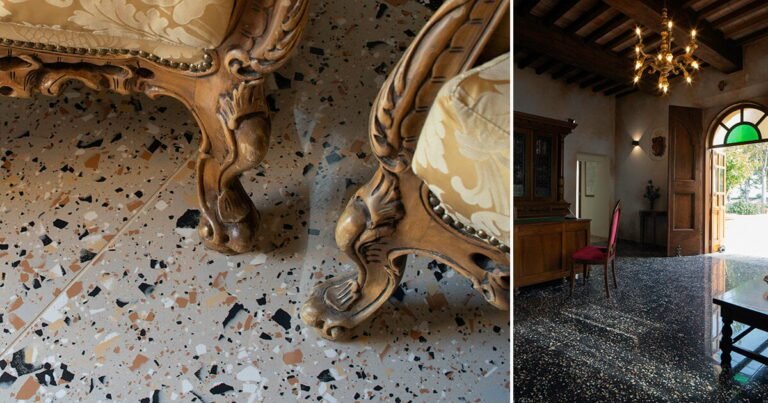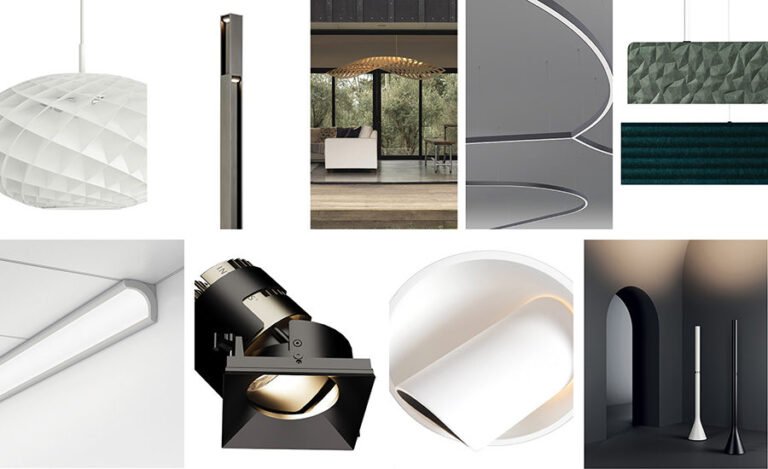drawing from japanese teahouses + scandinavian huts, llabb builds ‘hermitage’ cabin in italy
the Hermitage cabin by LLABB
Italian architecture firm llabb has completed Hermitage, a 12 sqm wooden cabin designed as a space for contemplation and introspection. Located in Italy’s Trebbia Valley in the heart of the Apennines, the structure is dry-sited and off-grid, built by the team during a 15-day construction workshop. Elaborating on modernist themes and drawing inspiration from Japanese teahouses and Scandinavian huts, the cabin is raised off the ground and incoporates a fully glazed wall offering expansive views of the surrounding forest. The resulting structure can be used as a studio, retreat, tea room, or guest house.
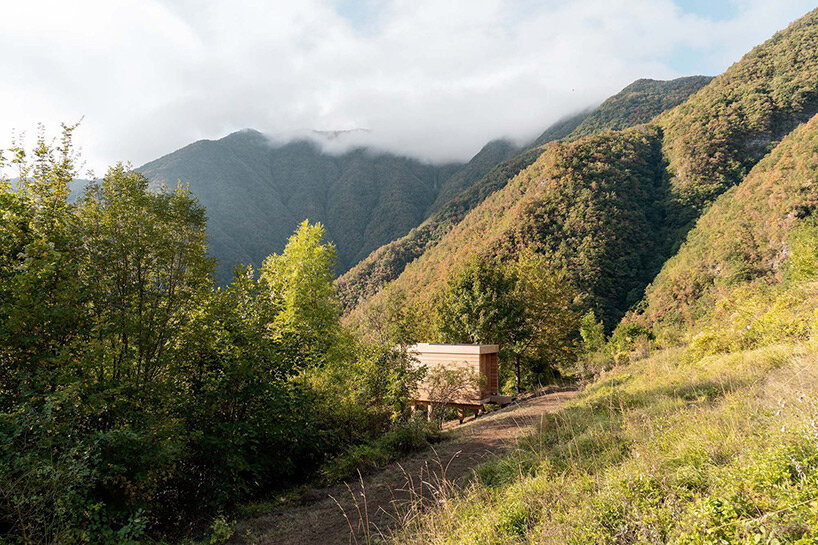
the Hermitage cabin is located in Italy’s Trebbia Valley in the heart of the Apennines
all images courtesy of Anna Positano, Gaia Cambiaggi | Studio Campo
minimalist living and close relationship with nature
The design of llabb’s Hermitage was based on a process of experimentation with a simple and modular system, made entirely of wood. With this project, the Italian studio seeks to address current environmental and social needs, starting from minimalist living and a close relationship with nature.
The structure has the shape of a rectangular cantilevered volume perpendicular to the steep slope. It is located facing northwest, with an entrance door characterized by a pronounced boarding, accessible by a footpath. The walls that delimit the hut, enclosing it on three sides, are covered with horizontally arranged plywood panels. In the southeast, the hut has a fully glazed wall that opens to the valley. Here, the interior space merges into a terrace separated by four floor-to-ceiling glass panels, one of which can be opened. The glazing follows the modularity of the brise-sole, which overhangs the terrace and in turn continues the roof structure.
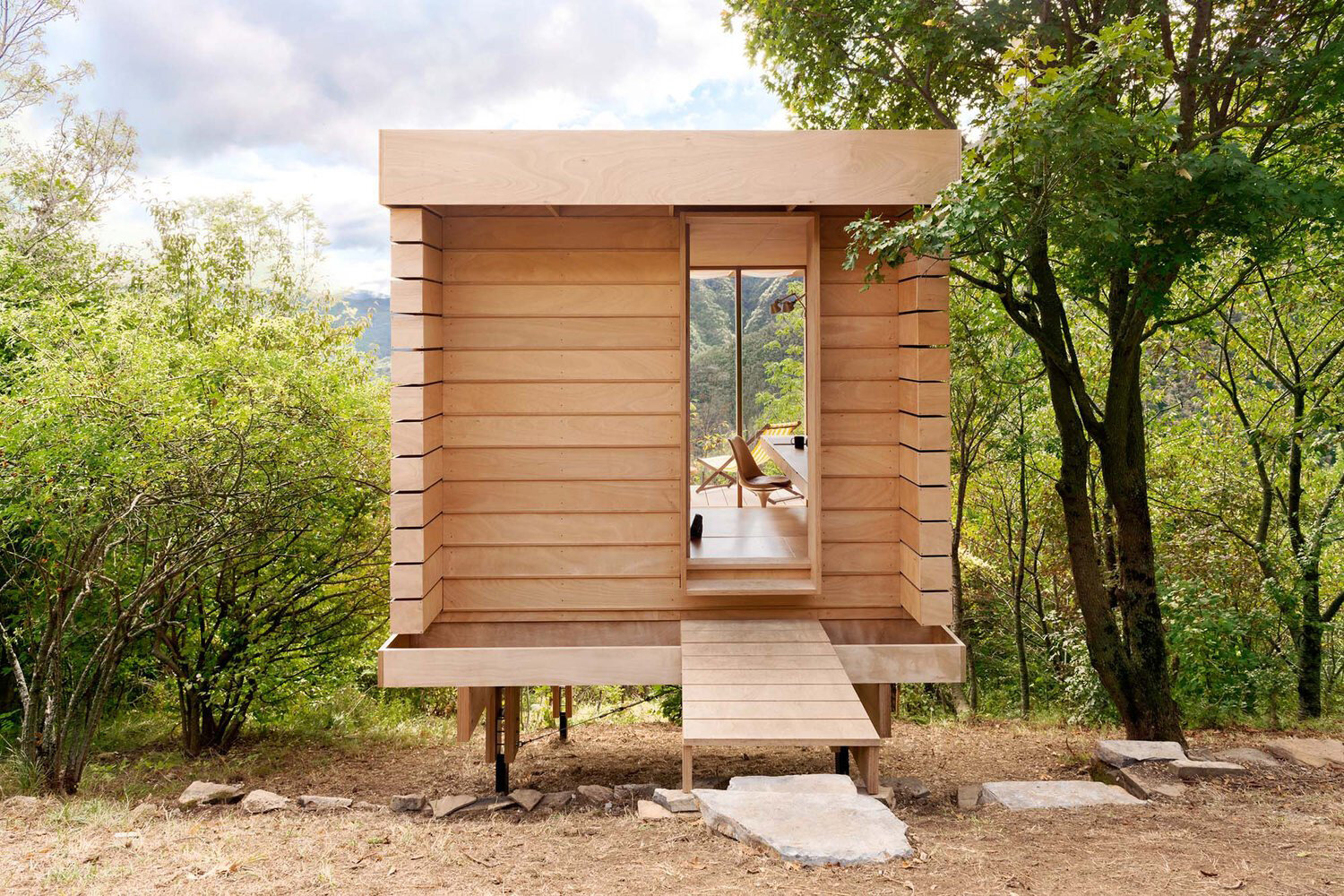
the entrance door is characterized by a pronounced boarding, and is accessible by a footpath
flexible interiors offering expansive valley views
Upon entering the cabin, occupants are immediately offered a view of the valley below, mediated by a series of elements that divide the interior space into three different levels. On the entry-level, there is a countertop that extends across the entire right wall, directing the visitor’s gaze outward while also serving as a seating area, desk, and storage area. The third and final level, to which one descends after passing through the entrance, is the one that defines the largest area and extends onto the terrace. The wall that encloses the tiny bathroom houses a fold-out bed that, when open, floats above the sofa. The summer sun creates different plays of light and shadow inside at different times of the day.
‘We paid special attention to the design of the interior space. Minimal and flexible, with the expansive glass wall facing the terrace, the space feels light and contemplative. The interplay between different levels offers the possibility to better manage storage spaces and technical compartments, while contributing to the definition
of a graceful atmosphere.’ explains Federico Robbian, one of the two founders of llabb.
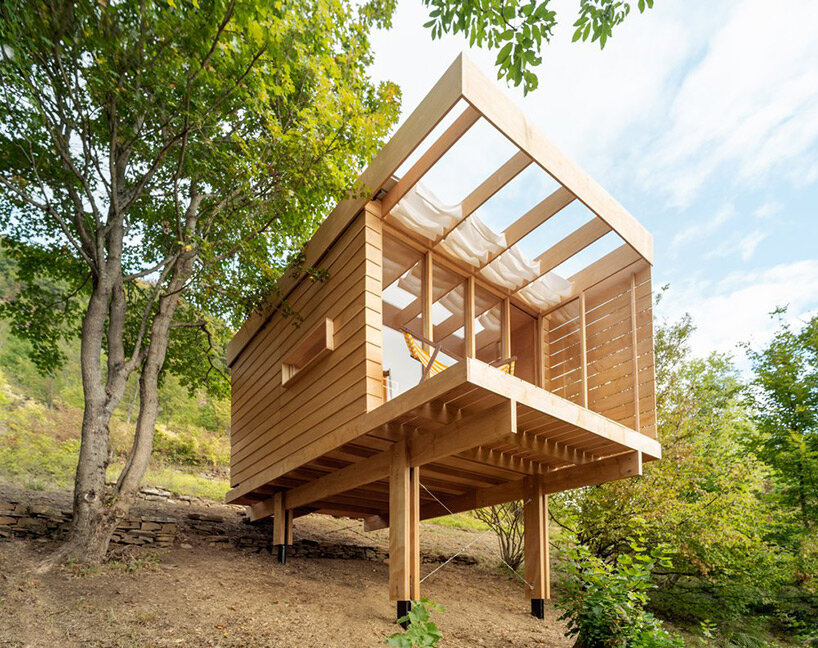
the structure has the shape of a rectangular cantilevered volume perpendicular to the steep slope
designed to be completely off-grid
The structure is supported by four metal columns with wide 60×60 cm pedestals resting on sandstone bases. The 4 legs, made of paired wooden elements, slim the structure upwards and make it hover above the ground. The walls, floor, and ceiling have been pre-assembled and are composed of Okoumè marine plywood panels, a wood chosen for its resistance to weathering. The facades are mounted on spacer battens so as to create an air space between the facade and the walls, which improves insulation performance. The roof is made of corrugated metal sheet. Above it two photovoltaic panels, connected to a storage battery, are installed.
The prototype is designed to be totally off-grid, as there is a compostable toilet and water canisters. However, the structure can easily be connected to a sewer system and water supply.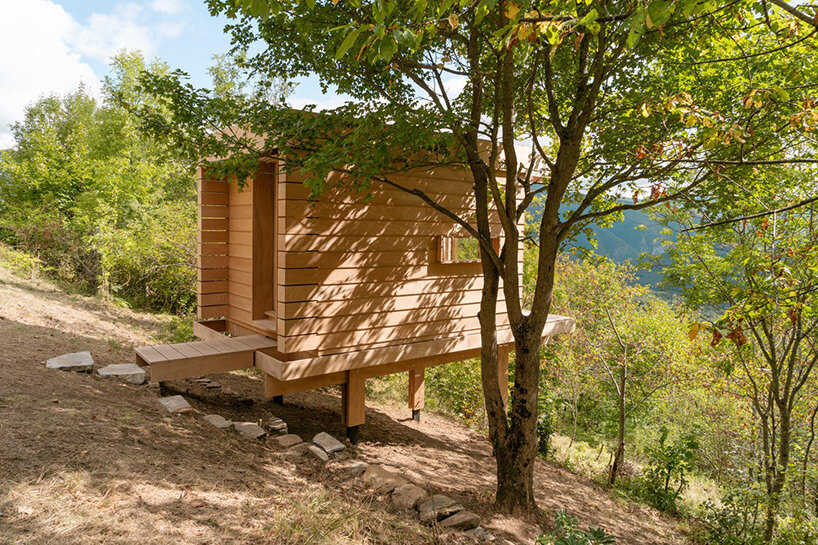
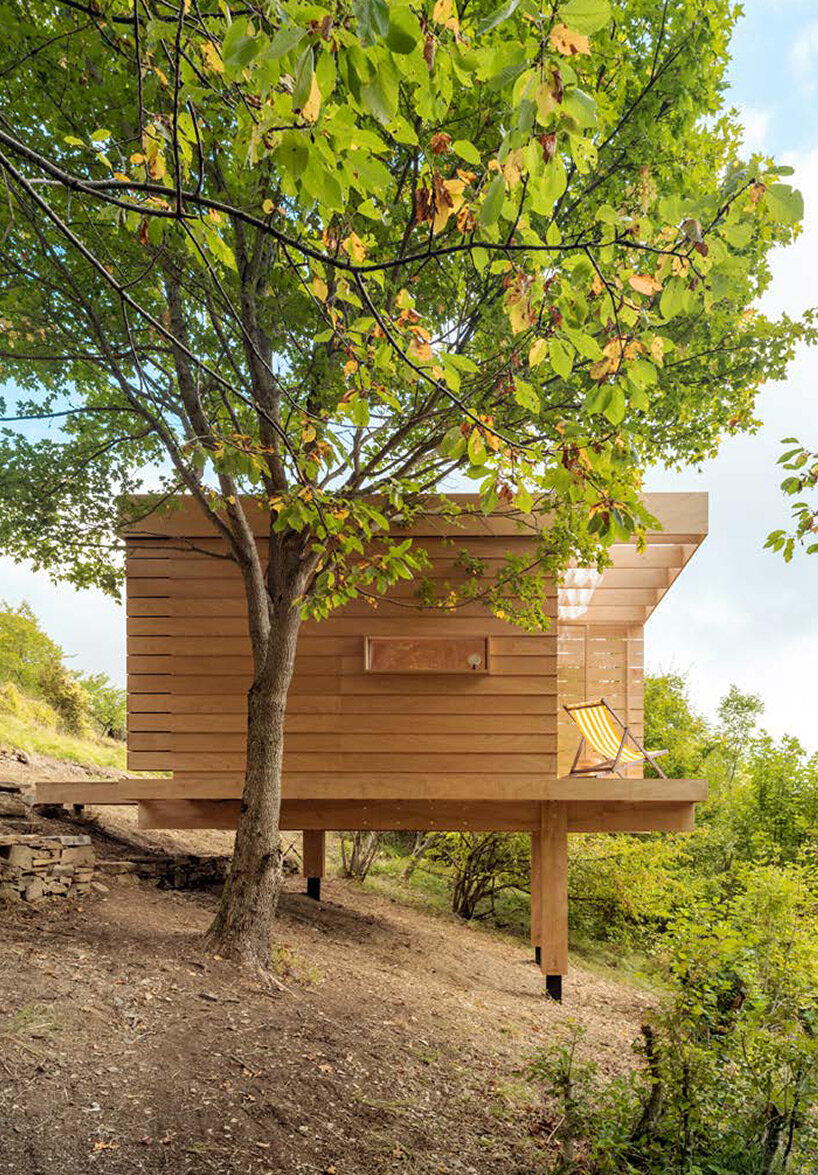
the structure is supported by four metal columns with wide 60×60 cm pedestals resting on sandstone bases
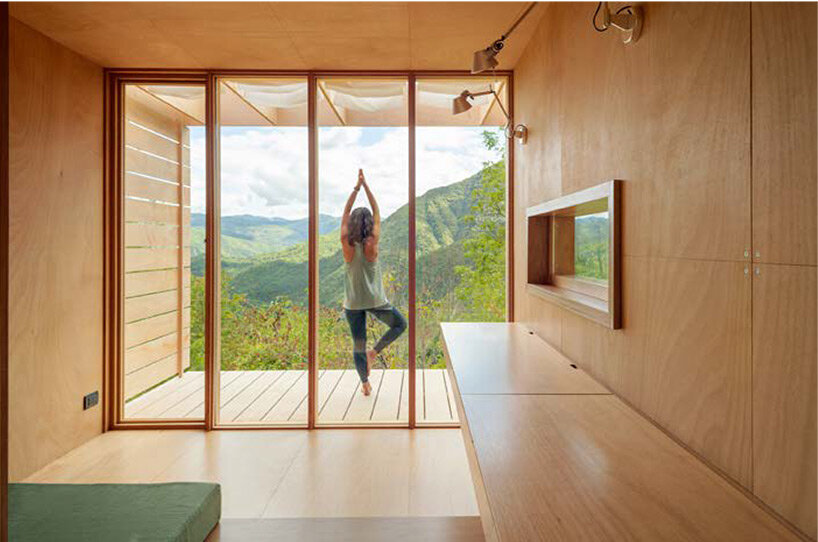
upon entering the cabin, occupants are immediately offered a view of the valley below


